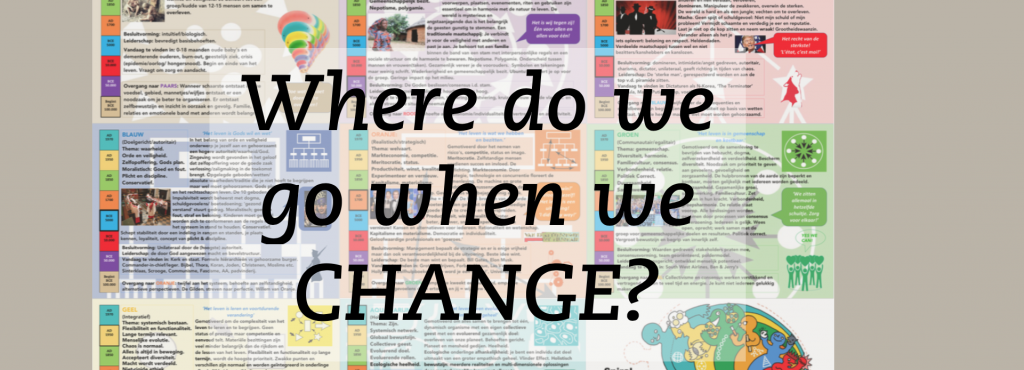
Social Change in Disconcerting Times
Social change
If you ever participated in a Special Session with Marshall Rosenberg, you would know that he saw Nonviolent Communication as a means to social change. He did not intend to criticize people for using the wrong language or words, but instead it was about taking a critical look at how we live together in our society and what we need to do to ensure that we (can) meet everyone’s needs as much as possible. A question that is certainly relevant and urgent at the moment when we consider what the consequences of a pandemic are. But what are the choices we are going to make? Are we aware of the choices we have or do we lapse into automatisms of what is known and therefore ‘safe’? Do we want to return to what we had as soon as possible or are we going to talk about what we can learn from this to scape our future? Will we seriously consider our ways? Are we willing to make waves to change a consumer society into a sustainable green one where everyone gets a fair shake?
Spiral Dynamics
The American professor of psychology Dr. Clare Graves developed a developmental model of human psychology in the 1950s. A representation of his work you see in the picture above. His students Don Beck and Christopher Cowan continued this work and wrote a book entitled “Spiral Dynamics.” The evolution of human psychology is divided here by colors that represent periods in our history. (Not the same as the DISC concept!) It shows how we started our development about 100,000 years ago and this is indicated by the color Beige. Itinerant groups of people roaming the land looking for food. After that, Purple follows and we started to live in tribes and villages cultivating the land. The color Red starts about 10,000 years ago: the start of Kingdoms, and deepening the divide between the poor and the rich. Then after that come the colors Blue, Orange and Green. That’s where it gets interesting for us.
Blue / Orange
In terms of Spiral Dynamics, it is an interesting time. We are in the era of Orange: the entrepreneur, me first, and the freedom to try your luck. However, when an Orange society comes under pressure, as it is at this moment, where do we turn to for a solution? When the solution cannot be found in the Orange meme, we’ll most likely look at the adjacent memes: Blue or Green. You only have to listen to the language we use to understand that we jumped back to the safety of Blue: Quarantine, Lock-Down, the government must intervene and take care of us. Blue came before Orange; in Blue the state / church / army takes care of you. Our Prime Minister is suddenly much more appreciated for his actions because he speaks in a reassuring tone and adequately addresses our concerns. Blue language can bring back peace in turbulent times. Where in Orange we focused on ‘what’s in it for me’, in Blue the focus is on ‘Us’ our common interest and so it is ‘normal’ that we sacrifice (some) of our freedoms for the higher good. Staying at home, keeping a distance from each other, etc. In itself, this may be fine and necessary under the circumstances, but it also is a step back in our development. We were used to taking care of ourselves and now we rely on a higher authority again. That’s why it may start to feel like a straightjacket after a while. “Is that really the best solution?” you wonder. Our Prime Minister also has his doubts about this; “limitations are okay but no more and no longer than is really necessary.” But is another choice possible?
Orange / Green
In Spiral Dynamics, the color Green comes after Orange. The Green meme is also more focused on ‘Us’ but does so in a different way. It is not about sacrificing your freedoms but realizing that we’re all in this together. In order to take care of each other, we need to look at a different social structure than we had before. This too is a result of Orange under pressure, but instead of becoming dependent, people are now experiencing the need to really start working together. There is more than the ordinary attention on the needs of the weak in our society because we are all in the same boat. That is encouraging to me because this is necessary to achieve the social change that Marshall Rosenberg envisioned. It is much like a restorative peace process in which people come together to ensure that no one is left behind. A new distribution of resources may be necessary. That may sound scary to many. Do we really want to have that conversation after everything we worked so hard for? So, are we ready to really innovate and reinvent our society? It reminds me of Dr. Robert Sapolsky’s research into the balance of power in a group of baboons. Relationships and awareness in the group only changed after a serious crisis. https://www.youtube.com/watch?v=QZcTvFqzxA0
Actual renewal requires action that is sustained after the crisis is over and starts (preferably now) with the conversation we need to have together. I think it would be useful to discuss the lessons we can learn from what happened. Not to prevent it from happening again – which is impossible – but to talk about how we interact when it happens, how we limit damage, and what our shared values are in our society. Is the economy more important than people or do we make and create the color of our economy together? Are you ready to participate and have this conversation?












